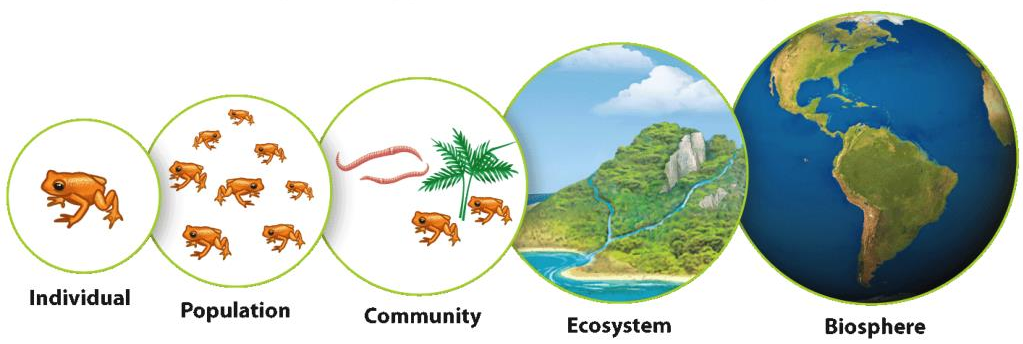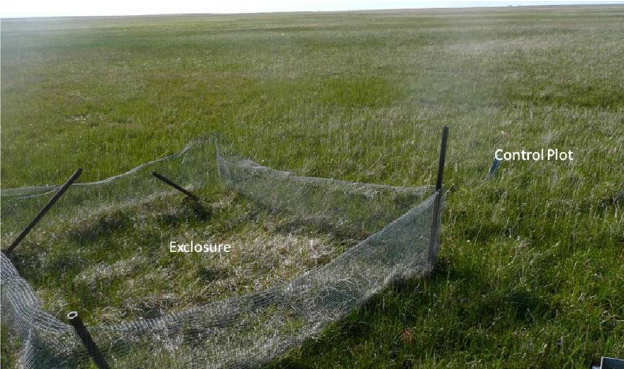Week 1: Intro to Ecology
Daijiang Li
LSU
1 / 40
Announcements
Note takers??
2 / 40
Syllabus
4 / 40
Readings
Purugganan, Mary, and Jan Hewitt. "How to read a scientific article." Rice University (2004). https://www.owlnet.rice.edu/~cainproj/courses/HowToReadSciArticle.pdf
Ecological Society of America. What does ecology have to do with me? https://www.esa.org/about/what-does-ecology-have-to-do-with-me/
6 / 40
Currently there are about 8 billion people on earth. When did the human population reach half its current level?
a. 1790
b. 1900
c. 1974
d. 2000
7 / 40
How many species of animals and plants are there on earth?
a. 300,000
b. 1 million
c. 10 million
d. 30 million
8 / 40
c
How many new bird species are discovered each decade?
a. 0
b. 1
c. 10
d. 60
9 / 40
What fraction of the world's bird species has been driven extinct or near threatened by humans over the last 1,000 years?
a. 0.1%
b. 1%
c. 5%
d. 20%
10 / 40
c. but the acutal percentage probably is much higer, 10-20%.
Scientists have been aware of the "greenhouse effect" for
a. 10 years
b. 25 years
c. 100 years
11 / 40
R code demo
12 / 40
That's all for today
13 / 40
What is ecology?
The study of interactions among biological organisms and between organisms and their environment.
14 / 40
Interactions with same species
- Competition
- food
- space
- mates
- Cannibalism
- Dispersal processes
15 / 40
Interactions with different species
- Competition
- Predator -- prey
- Plant -- pollinator
- Host -- parasite

16 / 40
Interactions with the environment
- Allelopathy
- Thermal tolerance
- Disturbance ecology
- Dispersal limitation
- Ecosystem engineers
17 / 40
What ecology isn't
18 / 40
Environmental Science
Interdisciplinary field that draws concepts, expertise, and tools from natural and social sciences
Ecology is a Component of Environmental Science
Environmentalism
A political and social ideology seeking to limit human impact on the environment
Ecology Can Inform Environmentalism
19 / 40
Biomedicine
Gets conflated with ideas of "mainstream medicine"
Generally applies to clinical practice and only to human populations (can some part of the environment make me better?)
20 / 40
Natural history
Descriptive study of natural organisms
Slightly separate from ecology, though ecological studies often utilize museum collections, and museum collections are essentially natural history storehouses
21 / 40
Evolution
Change of allele frequencies over time
Strong feedbacks with ecological processes
"Nothing in Biology Makes Sense except in the Light of Evolution"
- Theodosius Dobzhansky
22 / 40
Ecology is a Science

23 / 40
levels of biological organization

24 / 40
Individual
A single individual of a species. Unit of natural selection
e.g., a single trout in lake superior
domain of physiological and behaviour ecology; e.g., how do zebras regulate their internal water balance?
25 / 40
Population
A collection of individuals that occupy a given geographic area and interact with one another. Unit of evolution
e.g., trout in lake superior
population structure, growth, distribution and abundance? How these processes are affected by biotic (e.g., predator) and abiotic aspects of the environment?
26 / 40
Community
A set of interacting species that occupy a given geographic area.
e.g., fish communities in lake superior, focus on kinds and diversity of organisms
What factors influence the number of fishes living together in a lake? How multiple species be able to coexist in a small forest?
27 / 40
Ecosystem
The set of interacting species (the community) and the interactions between these species and their physical environment.
e.g., a grassland, focus on ecological processes such as energy flow or nutrient cycle
How does fire affect nutrient availability in grassland ecosystems?
28 / 40
Biosphere
The global environment, consisting of all living things on the planet.
e.g., the planet
What role does concentration of atmoospheric CO2 play in the regulation of global temperature?
29 / 40
Human activities have altered over 75% of the Earth's land surface. What is the role of the environment and land use change to each level?
30 / 40
Ecosystem
34 / 40
How do we do ecology?
36 / 40
Manipulative experiments

38 / 40
Laboratory experiments

39 / 40
Ecological modeling
SI model as an example
St+1=bSt−βStIt It+1=βStIt−γIt
40 / 40
